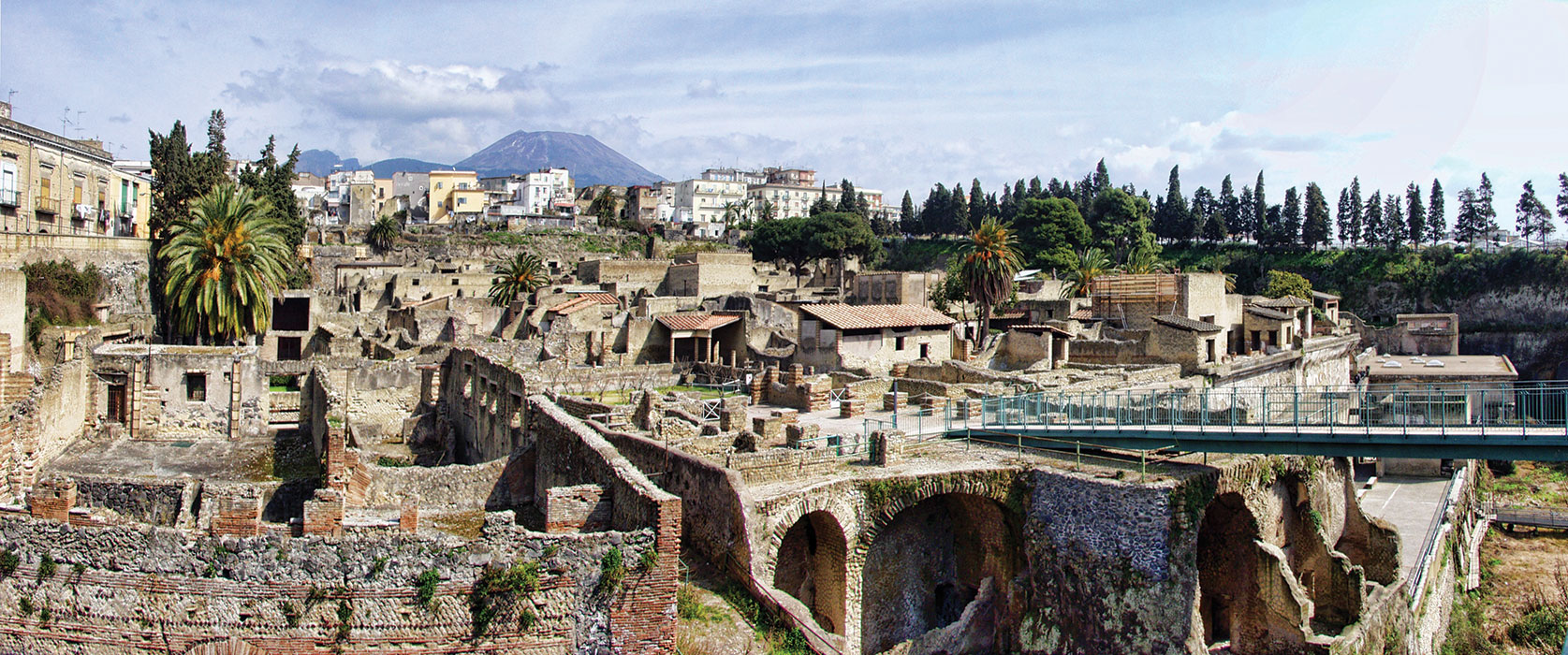In AD 79, Herculaneum was a small seaside town. Fishermen coming home from their day’s labor on the water landed at the docks beside the beautiful, arched vaults of the city. Looking up, they would have seen their home. Unfortunately, Herculaneum was nestled at the foot of an active volcano.
There was no time to prepare, only to run. The ground juddered. The sky burned. It must have looked like the end of the world.
Remarkably, some of the inhabitants escaped, but not all were so fortunate. Hundreds perished before they could find safety; skeletons huddled together by the shore testify to this fact. The remains were preserved there for centuries.

Skip Pompeii, Try Herculaneum
When you hear the word Vesuvius, the name of that infamous Italian volcano, you probably think of Pompeii. Not far away, however, lies its lesser-known counterpart: Herculaneum. This small town on the shore of the Tyrrhenian Sea lies beneath and alongside the modern city Ercolano. While you may not have heard of it, this city should rival Pompeii as a “must-see” place to visit on your bucket list.
The sites of Pompeii and Herculaneum are comparable, but there are a couple of points to keep in mind. Herculaneum is smaller than Pompeii, making it a manageable day trip. It is also significantly better preserved than Pompeii, and, as a result, offers a number of sights that can’t be found anywhere else. This extraordinary preservation is due to the unique effect the eruption had on Herculaneum. Unlike Pompeii, Herculaneum was buried under up to sixty feet of ash and rock. The rock protected statues, buildings, and many other features of the city. Even fragile and organic items like food, fabric, papyri scrolls, wooden furniture, and human skeletons survived. The city was protected from time and weather as well as from those who would steal or disturb the artifacts. Herculaneum was discovered much later than Pompeii, and, after considerable excavation, it has been declared a UNESCO world heritage site.
Visitors to Herculaneum often begin their tour with the arched vaults on the shore, where many citizens of the city sought protection during the eruption. Their bones still remain and were a significant find for archeologists. Traditionally, Romans of this time period cremated their dead, making these inhabitants of Herculaneum the first Roman skeletons discovered from the first century.
Further into the city are shops, fountains, baths, and swimming pools, which are not only an architectural beauty in themselves but are also covered in incredibly preserved mosaics and frescoes. The city itself is like a museum, allowing a unique glimpse into the lives of those who lived in Herculaneum, both the poor and the wealthy. One area worth noting is the Villa dei Papiri, one of the homes owned by Julius Caesar’s father-in-law.
Tips for Visitors
Herculaneum has smaller crowds than the better-known Pompeii. It is open all year with very few exceptions (like December 25 and January 1), but has different hours depending on the season. Be sure to check the website: www.rome.net/herculaneum.
Tickets to enter the site vary from five-and-a-half to eleven pounds, depending on age and citizenship. You can also buy a combined ticket, which allows entry to Herculaneum, Pompeii, Oplontis, Stabiae, and Antiquarium of Boscoreale for between ten and twenty pounds.
Most visitors arrive at Herculaneum by train, though there are also places for parking. A train from Naples to Herculaneum will take two or three hours with prices that vary depending on the type of train.
Maps and pamphlets are typically provided at Herculaneum for visitors, but to be safe you may want to download this information before you arrive—it would put a damper your trip if there aren’t any paper copies left on-site.
Make a trip to Herculaneum and be ready for an incredible experience unlike any other. Take a step into the past and witness a piece of Italy you’ll never forget.
Written by Laci Player

